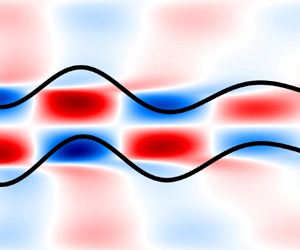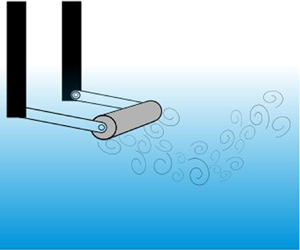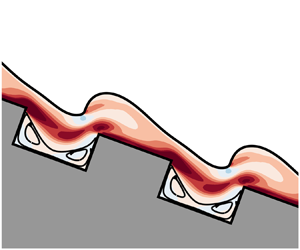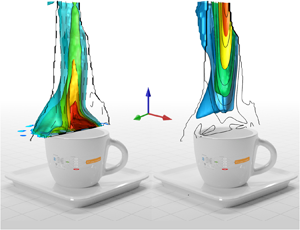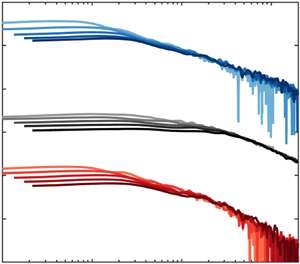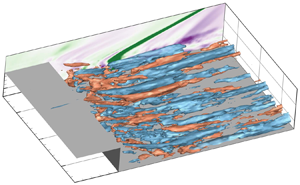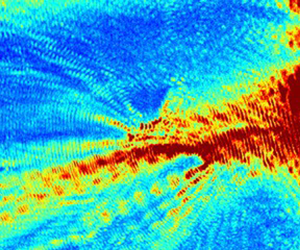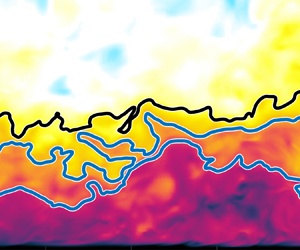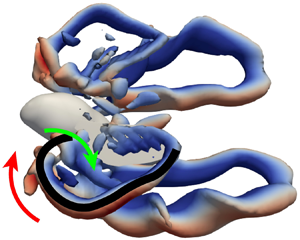Graphical abstract from McCorquodale, M. & Munro, R. 2021. Direct eff ects of boundary permeability on turbulent fl ows: Observations from an experimental study using zero-mean-shear turbulence. J. Fluid Mech. 915, A134. doi:10.1017/jfm.2021.160.
Contents
JFM Papers
The Eckert–Weise effect and energy separation under the flow interference behind side-by-side cylinders
-
- Published online by Cambridge University Press:
- 25 March 2021, A95
-
- Article
- Export citation
Global stability and nonlinear dynamics of wake flows with a two-fluid interface
-
- Published online by Cambridge University Press:
- 25 March 2021, A96
-
- Article
- Export citation
Fluid–structure interactions of a circular cylinder in a stratified fluid
-
- Published online by Cambridge University Press:
- 25 March 2021, A97
-
- Article
- Export citation
Stability analysis of viscoelastic film flows over an inclined substrate with rectangular trenches
-
- Published online by Cambridge University Press:
- 25 March 2021, A98
-
- Article
-
- You have access
- Open access
- HTML
- Export citation
Pairwise hydrodynamic interactions of spherical colloids at a gas-liquid interface
-
- Published online by Cambridge University Press:
- 25 March 2021, A99
-
- Article
- Export citation
Shock detachment and drag in hypersonic flow over wedges and circular cylinders
-
- Published online by Cambridge University Press:
- 25 March 2021, A100
-
- Article
- Export citation
Fractality of metal pad instability threshold in rectangular cells
-
- Published online by Cambridge University Press:
- 25 March 2021, A101
-
- Article
- Export citation
Flow over an espresso cup: inferring 3-D velocity and pressure fields from tomographic background oriented Schlieren via physics-informed neural networks
-
- Published online by Cambridge University Press:
- 25 March 2021, A102
-
- Article
-
- You have access
- HTML
- Export citation
Lift and drag forces acting on a particle moving in the presence of slip and shear near a wall
-
- Published online by Cambridge University Press:
- 25 March 2021, A103
-
- Article
- Export citation
On the scaling of turbulence in a high Reynolds number tidal flow
-
- Published online by Cambridge University Press:
- 25 March 2021, A104
-
- Article
- Export citation
Surface bubble coalescence
-
- Published online by Cambridge University Press:
- 25 March 2021, A105
-
- Article
- Export citation
The generation and diffusion of vorticity in three-dimensional flows: Lyman's flux
-
- Published online by Cambridge University Press:
- 25 March 2021, A106
-
- Article
- Export citation
Low-frequency unsteadiness mechanisms in shock wave/turbulent boundary layer interactions over a backward-facing step
-
- Published online by Cambridge University Press:
- 29 March 2021, A107
-
- Article
-
- You have access
- Open access
- HTML
- Export citation
Acoustic–gravity waves from multi-fault rupture
-
- Published online by Cambridge University Press:
- 29 March 2021, A108
-
- Article
- Export citation
Uniform-momentum zones in a turbulent boundary layer subjected to freestream turbulence
-
- Published online by Cambridge University Press:
- 29 March 2021, A109
-
- Article
-
- You have access
- Open access
- HTML
- Export citation
Conditioning and accurate solutions of Reynolds average Navier–Stokes equations with data-driven turbulence closures
-
- Published online by Cambridge University Press:
- 29 March 2021, A110
-
- Article
- Export citation
A global linearized framework for modelling shear dispersion and turbulent diffusion of passive scalar fluctuations
-
- Published online by Cambridge University Press:
- 29 March 2021, A111
-
- Article
- Export citation
Spanwise localized control for drag reduction in flow passing a cylinder
-
- Published online by Cambridge University Press:
- 29 March 2021, A112
-
- Article
- Export citation
Characteristics of drag-reduced turbulent boundary layers with pulsed-direct-current plasma actuation
-
- Published online by Cambridge University Press:
- 29 March 2021, A113
-
- Article
- Export citation
A CFD data-driven aerodynamic model for fast and precise prediction of flapping aerodynamics in various flight velocities
-
- Published online by Cambridge University Press:
- 31 March 2021, A114
-
- Article
- Export citation


